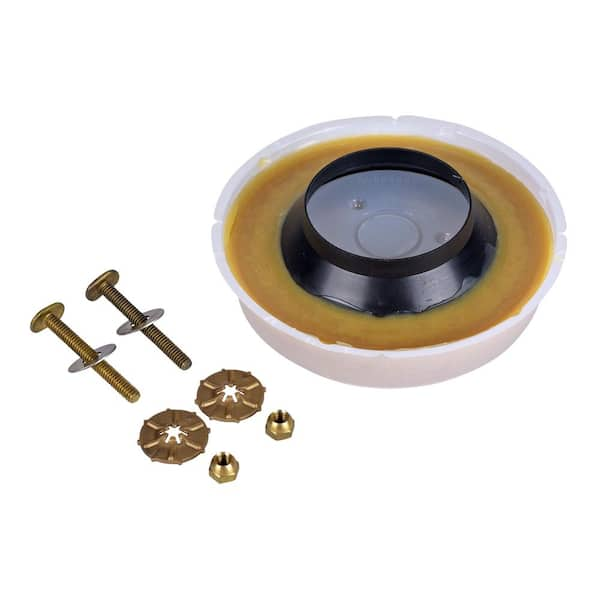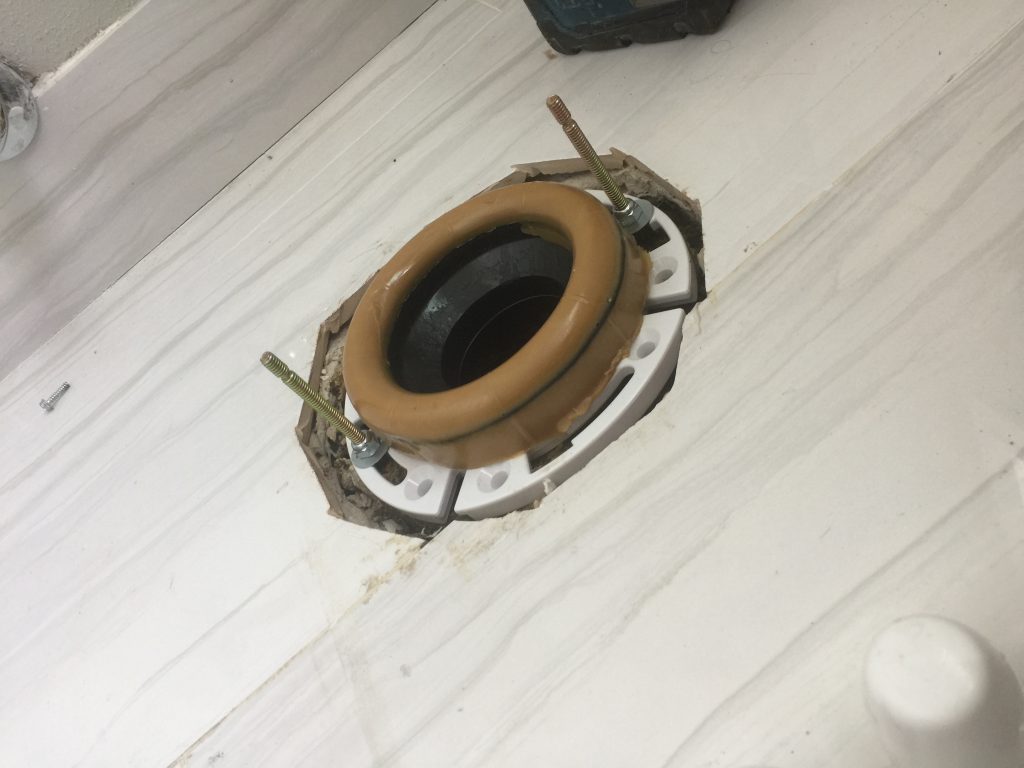

If the tank isn’t cracked, the water may be condensation caused by cool water entering the tank in the warmer, humid bathroom. If the tank is cracked, you may be able to replace only the toilet tank. If there’s water dripping from the side of the tank, check for cracks in the tank.If tightening the bolts doesn’t fix the leak or if the bolts are damaged, you’ll need to uninstall the toilet and check the bolts, the toilet anchor flange that holds the bolts, and the wax ring that seals the connection between the toilet and the waste pipe. If necessary, make sure the toilet is in the right position and tighten the bolts. For leaks where the toilet meets the floor and/or there are water stains on a ceiling below the bathroom, check the mounting bolts that secure the toilet to the floor.If the bolts are tight and the leak persists, replace the bolts and the gasket between the tank and toilet base. If there’s a toilet base leak where the tank connects to the toilet bowl, check the bolts that secure the tank to the bowl and tighten them if needed.If you see damage or if it’s more than 5 years old, replace the supply line. Make sure the fill valve assembly is properly secured to the bottom of the tank.

If you identify a leak where the supply line enters the toilet, check the supply line connection to the toilet and tighten it if needed.You may be dealing with wastewater, so wear waterproof gloves when cleaning up the leak. Water will damage your floor and subfloor. Check the manufacturer’s instructions for cleaning out debris from your fill valve.Īddress a leaking toilet as soon as you notice a problem. Alternately, debris in the fill valve can prevent the water shut-off mechanism from working correctly. If you have an older-model fill valve or ball cock, this would be a good time to replace it with a new fill valve. If the tank isn’t emptying or the water level is spilling into the overflow tube, the fill valve may need cleaning or replacing.If the flapper appears to be in good shape or replacing it doesn't solve the problem, you may need to replace the entire flush valve assembly. If it’s not sealing the flush valve opening, water from the tank will leak into the bowl, and the toilet will run constantly to keep the tank filled. If the water level in the tank is dropping, check the flapper.When a toilet runs constantly, meaning water is constantly flowing into the tank through the fill valve, it wastes water and costs money. It may help to take the existing part to the store to find a replacement. For example, if you’re replacing a toilet flapper, select the type (flexible or solid frame) and size (2 inch or 3 inch) based on the existing part. Make sure the repair parts you purchase fit your toilet.When removing the tank lid, lift it carefully and place it in a safe place to avoid cracking it.
TOILET WAX RING KEEPS BREAKING CRACK
Overtightening metal hardware can crack the toilet, and overtightening plastic fasteners can damage them. Don’t overtighten nuts, bolts or other connectors. Adding tape on the jaws of pliers or a wrench can help protect the finish on metal fasteners. Use care when turning connectors and fasteners to avoid damaging them.If the tips below don’t help you fix your toilet, or if you have any doubts or questions about the repairs, contact a licensed plumber.Follow any local codes that apply to your work.

While many toilet repairs are relatively simple, there are some things to keep in mind when undertaking DIY work to avoid problems:


 0 kommentar(er)
0 kommentar(er)
